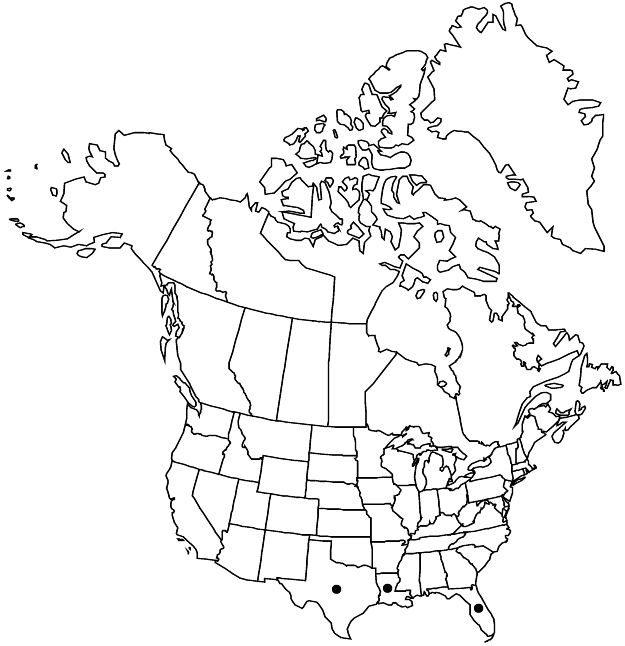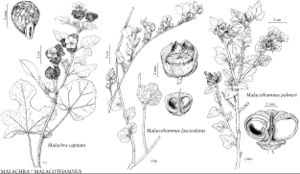Malachra capitata
Syst. Nat. ed. 12, 2: 458. 1767.
Plants 0.4–1.5 m. Stems densely stellate-hairy, sometimes with longer, simple hairs 1.5 mm. Leaves: stipules 9–15 mm; petiole to 1/2 as long as blade; blade ovate, lyrate, or 3–5-lobed, 4–10 cm, lobes basally narrowed, apex acute or obtuse, surfaces stellate-hairy. Racemes pedunculate; peduncle usually exceeding corresponding petiole; boat-shaped floral bracts subsessile, with prominent, white markings at base, deeply cordate, margins entire, often hispid. Flowers: calyx 6–8 mm; petals 7–10 mm. Mericarps brownish, 3 mm, smooth with reticulate veins, glabrous. 2n = 56.
Phenology: Flowering year-round.
Habitat: Disturbed vegetation, thickets, roadsides, cultivated fields
Elevation: 0–300 m
Distribution

Fla., La., Tex., Mexico, West Indies, Central America, South America, introduced in Asia (Malesia).
Discussion
Malachra capitata is introduced in Malesia according to J. van Borssum Waalkes (1966), who synonymized M. capitata and M. alceifolia Jacquin. The Louisiana records are thought to represent adventive or introduced populations. Those in southern Florida and Texas are accepted as native populations.
Selected References
None.
